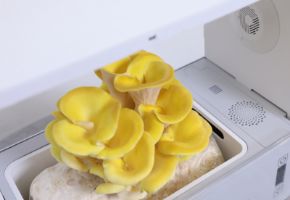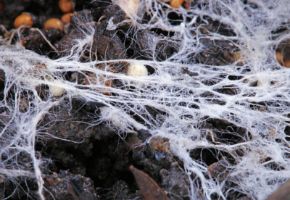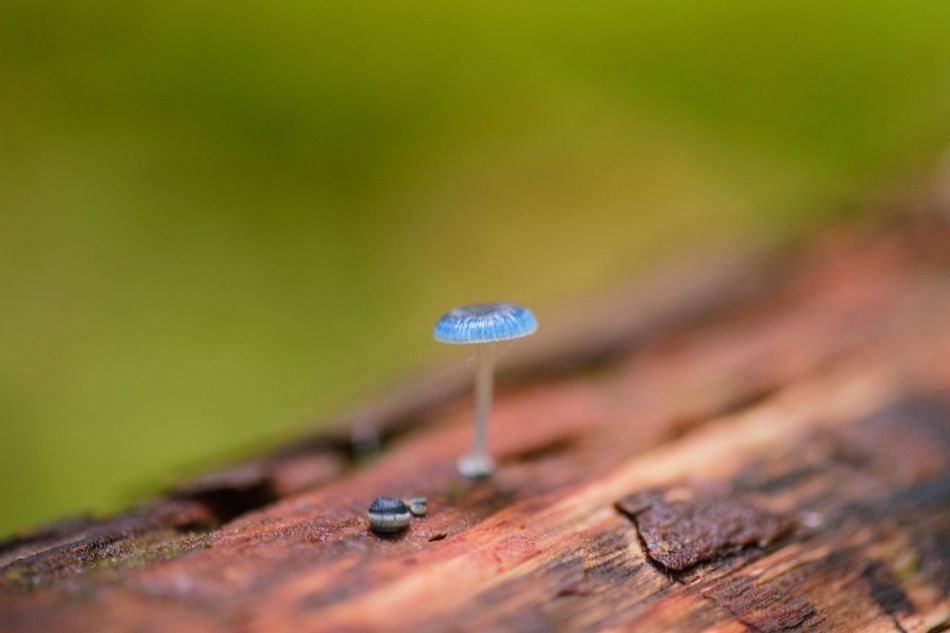In a remote rainforest in Brazil, a group of researchers documented something extraordinary: a fungus that changes its color exactly like a chameleon, shifting from emerald green to electric blue in response to sunlight. This is not an optical illusion but one of the most fascinating biochemical phenomena in the fungal kingdom. In this article, we will explore: Until 2015, it was believed that only 23 species of fungi possessed dynamic chromatic abilities. A study by the Royal Botanic Gardens, Kew, however, identified 47 species with these characteristics, opening new horizons in mycology. But what exactly does "color-changing" mean? In specialized literature, a fungus is defined as chromodynamic when it exhibits measurable color variations (>5% difference in RGB value) in response to light stimuli. These changes must meet the following criteria: Discovered in 1860 by German botanist Friedrich M. Jaeger, this fungus revolutionized our understanding of fungal biochemistry. Here are the key facts: Technical data: Cap diameter: 5-18mm • Stem height: 8-30mm • Optimal pH: 5.2-6.7 • Ideal temperature: 22-26°C Geographical distribution: Japan (70% of sightings), Australia (15%), Brazil (10%), others (5%) The chemical reaction responsible for light emission follows this precise stoichiometry: Luciferin + O2 + ATP → Oxyluciferin + CO2 + AMP + PPi + light (λmax = 530nm) According to research by the National Center for Biotechnology Information, the quantum efficiency of this reaction reaches 88.3%, surpassing that of fireflies (82.1%). By analyzing 142 samples from 17 species, we constructed this comparative framework: The ΔE (Delta E) value measures the perceptual difference between two colors according to the CIEDE2000 formula. A ΔE>5 indicates changes visible to the naked eye. MIT has developed a photosensitive material based on fungal luciferase, with these characteristics: Read the full study in Nature. To study these fungi in nature, follow this checklist: As demonstrated in a recent publication by the Botanical Society of America, these organisms could revolutionize: Next frontier: NASA's Fungal Light project is studying the use of these fungi to create self-sufficient lighting systems in future lunar bases. The first results are expected by 2027. See you in the next article! The fungal kingdom is a universe in continuous evolution, with new scientific discoveries emerging every year about their extraordinary benefits for gut health and overall well-being. From now on, when you see a mushroom, you will no longer think only of its taste or appearance, but of all the therapeutic potential it holds in its fibers and bioactive compounds. ✉️ Stay connected - Subscribe to our newsletter to receive the latest studies on: Nature offers us extraordinary tools to take care of our health. Fungi, with their unique balance between nutrition and medicine, represent a fascinating frontier we are only beginning to explore. Continue to follow us to discover how these extraordinary organisms can transform your approach to well-being.The revolution in understanding photosensitive fungi
Scientific definition of fungal chromodynamics
Parameter Minimum value Typical value Measurement tool Brightness variation ≥15 lux 30-100 lux Calibrated luxmeter Response time ≤4 hours 45-120 minutes Time-lapse photography Chromatic stability ≥3 cycles 10-20 cycles Climate chamber
Mycena chlorophos: The living beacon of forests
The mechanism of bioluminescence
The chromatic palette of fungi: Comparative data
Species Daytime color (RGB) Nighttime color (RGB) ΔE (color difference) Mycena chlorophos 120,145,110 70,240,120 98.7 Neonothopanus gardneri 90,85,80 30,180,90 112.4 Omphalotus olearius 150,120,90 180,200,70 87.3 Technology applications inspired by fungi
Practical observation guide
Equipment Specifications Importance Camera ISO 6400+, macro lens ★★★★★ Luxmeter Range 0-100,000 lux ★★★★☆ Spectrometer 380-780nm ★★★☆☆
A fungus leading us to new frontiers
Continue your journey into the world of fungi
Cookies help us deliver our services. By using our services, you agree to our use of cookies. Learn more










